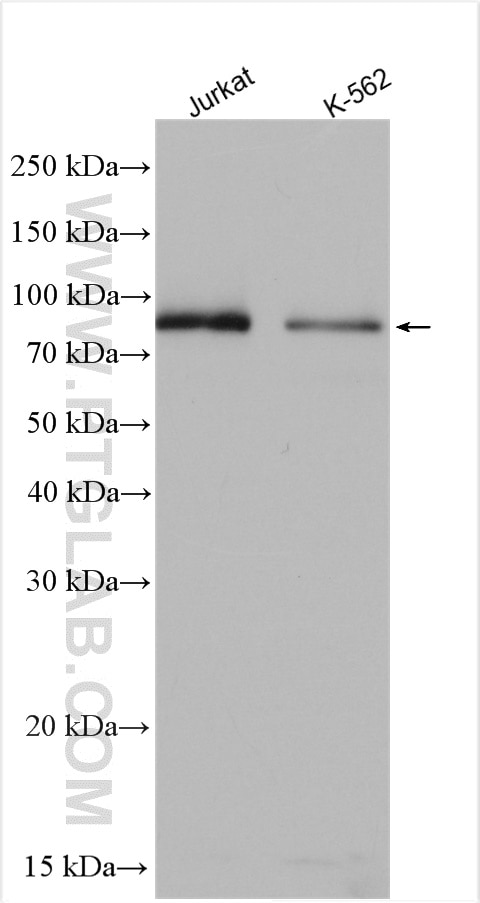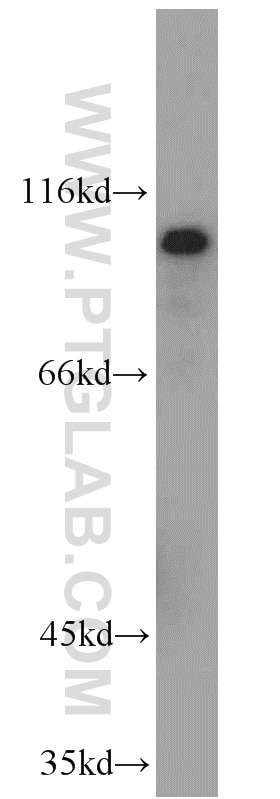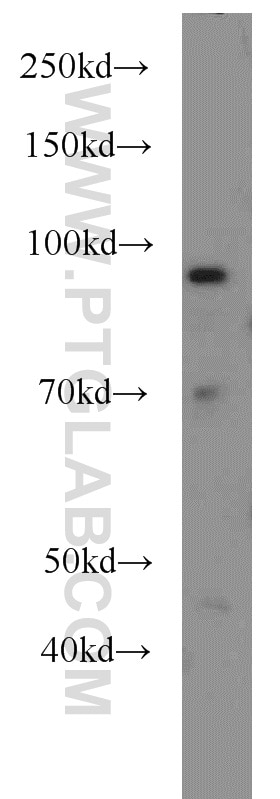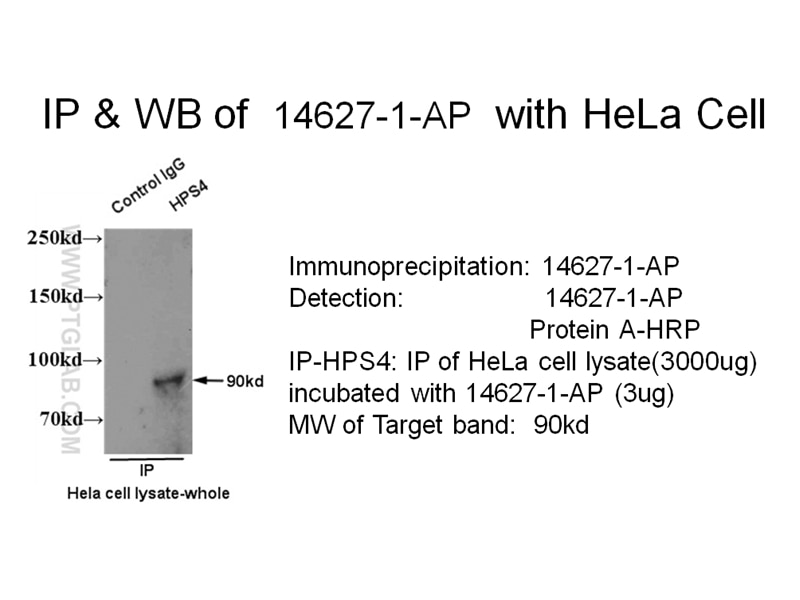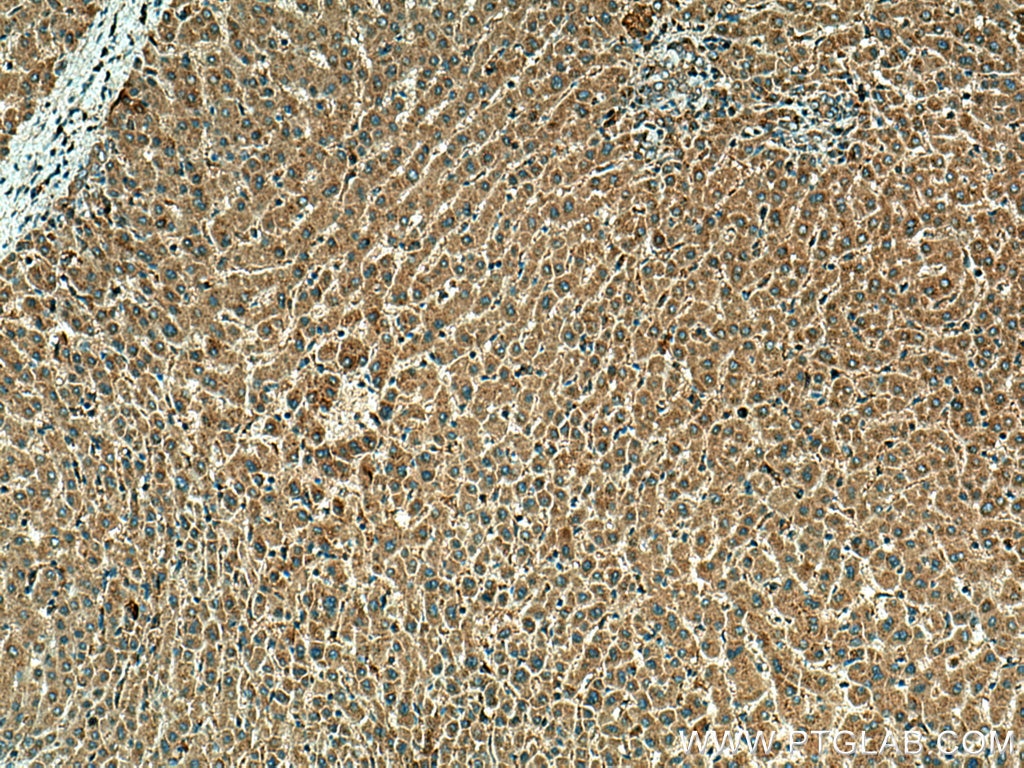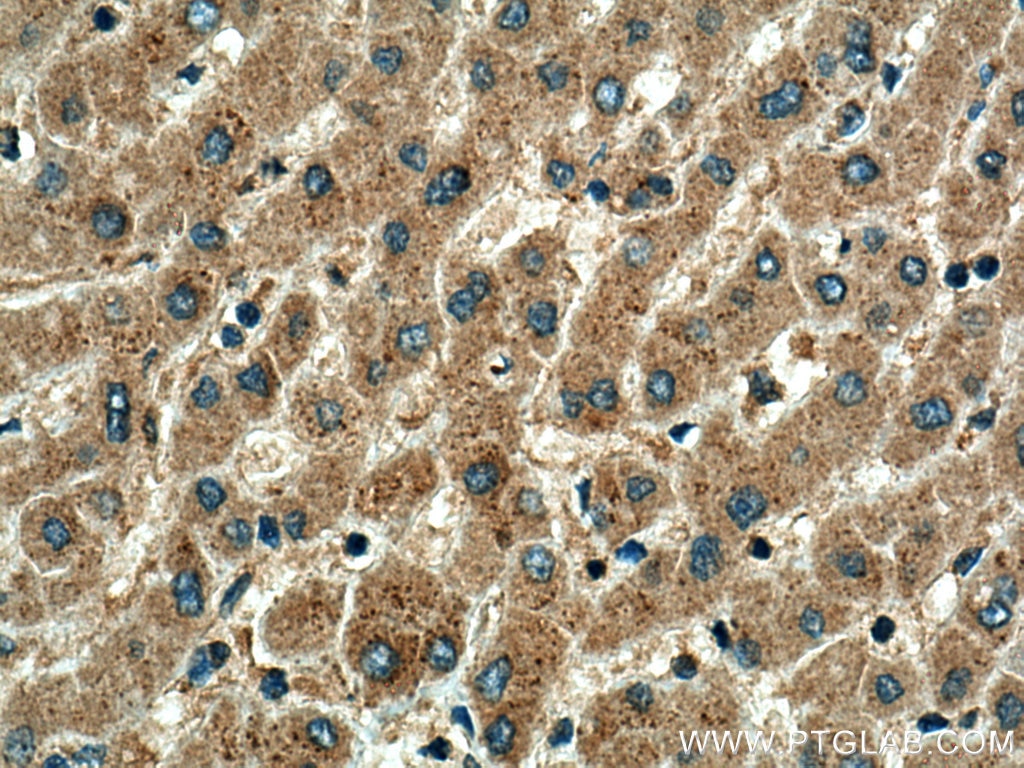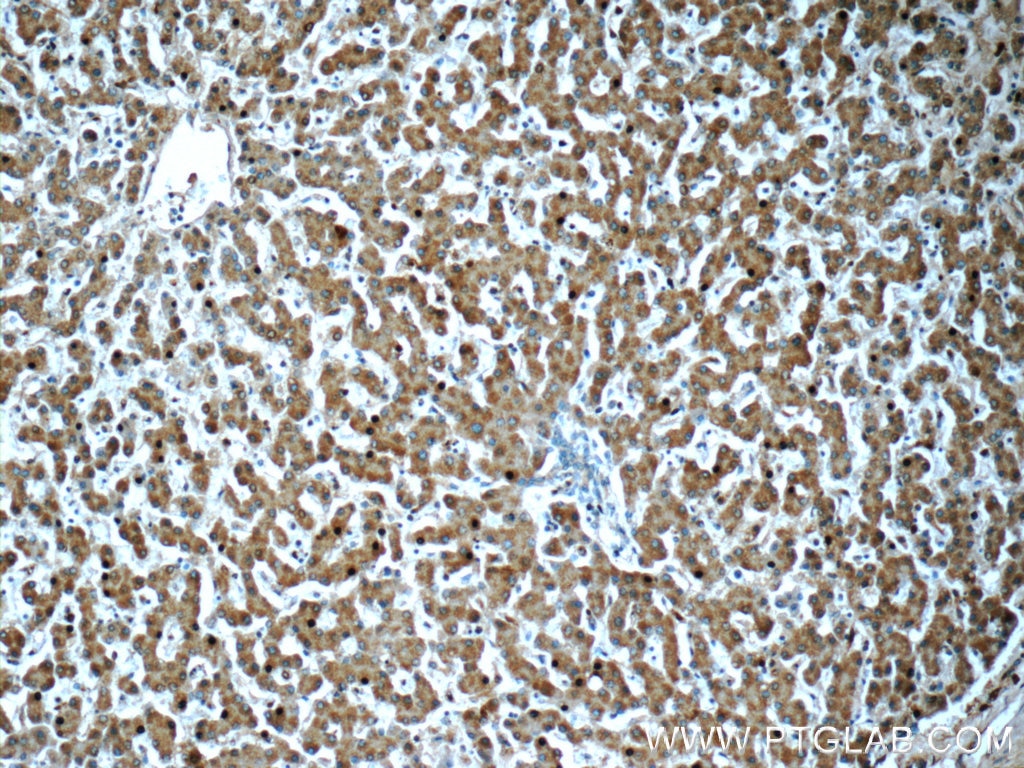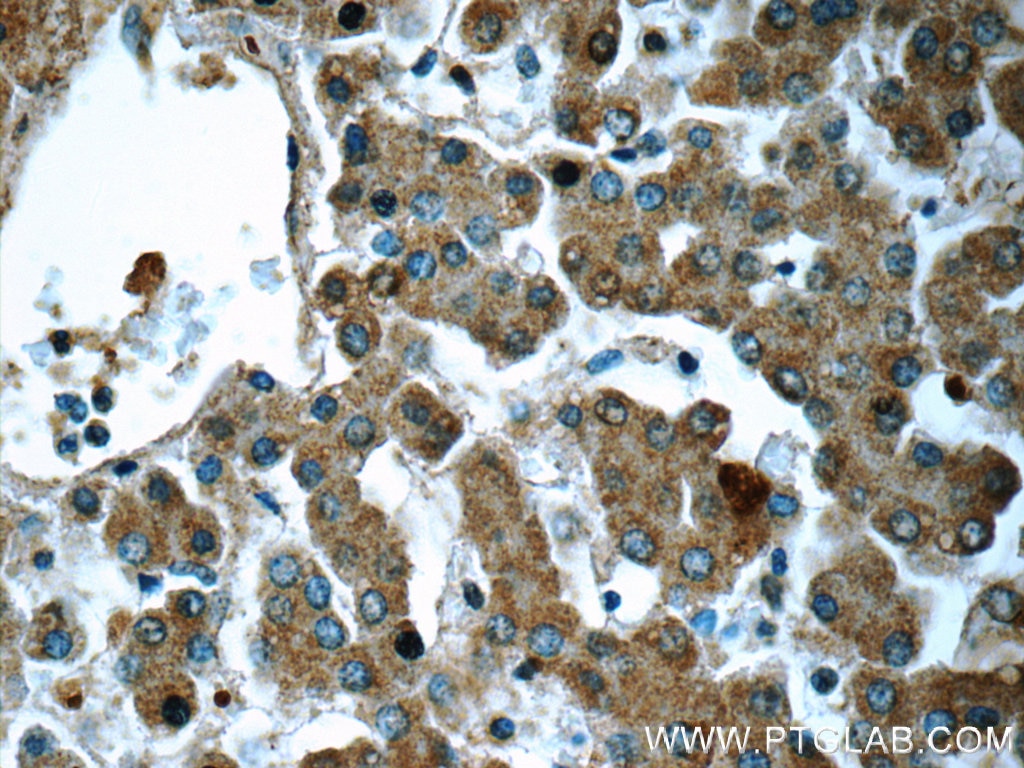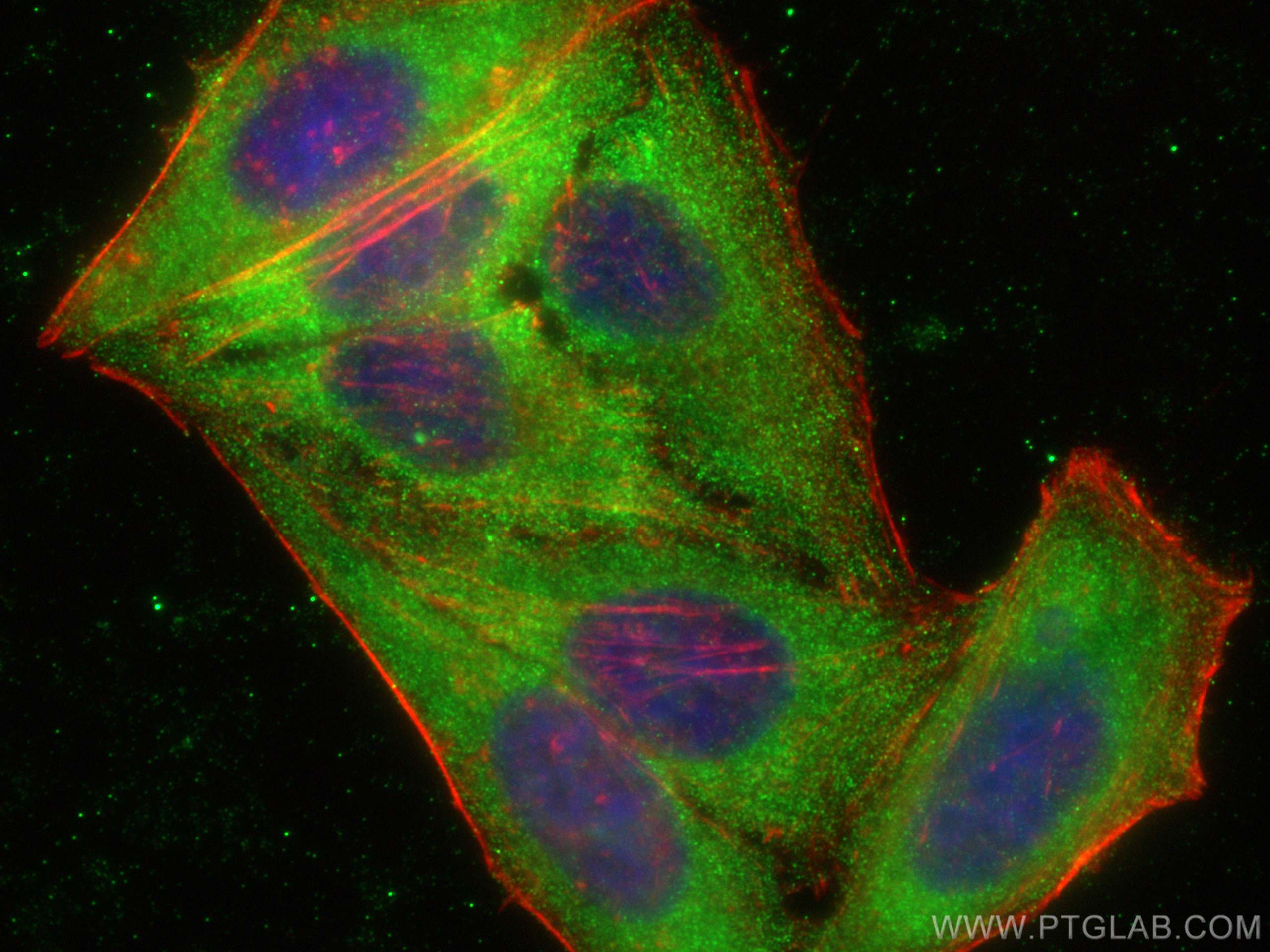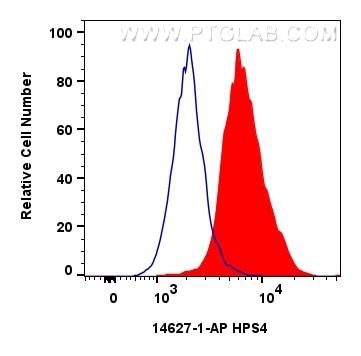Anticorps Polyclonal de lapin anti-HPS4
HPS4 Polyclonal Antibody for WB, IHC, IF/ICC, FC (Intra), IP, ELISA
Hôte / Isotype
Lapin / IgG
Réactivité testée
Humain et plus (1)
Applications
WB, IHC, IF/ICC, FC (Intra), IP, ELISA
Conjugaison
Non conjugué
N° de cat : 14627-1-AP
Synonymes
Galerie de données de validation
Applications testées
| Résultats positifs en WB | cellules Jurkat, cellules A375, cellules HeLa, cellules K-562 |
| Résultats positifs en IP | cellules HeLa, résultat de l'IP de l'anti-HPS4 (14267-1-AP pour IP et détection) avec lysat de cellules HeLa |
| Résultats positifs en IHC | tissu hépatique humain, il est suggéré de démasquer l'antigène avec un tampon de TE buffer pH 9.0; (*) À défaut, 'le démasquage de l'antigène peut être 'effectué avec un tampon citrate pH 6,0. |
| Résultats positifs en IF/ICC | cellules HepG2, |
| Résultats positifs en FC (Intra) | cellules HepG2, |
Dilution recommandée
| Application | Dilution |
|---|---|
| Western Blot (WB) | WB : 1:500-1:1000 |
| Immunoprécipitation (IP) | IP : 0.5-4.0 ug for 1.0-3.0 mg of total protein lysate |
| Immunohistochimie (IHC) | IHC : 1:50-1:500 |
| Immunofluorescence (IF)/ICC | IF/ICC : 1:200-1:800 |
| Flow Cytometry (FC) (INTRA) | FC (INTRA) : 0.40 ug per 10^6 cells in a 100 µl suspension |
| It is recommended that this reagent should be titrated in each testing system to obtain optimal results. | |
| Sample-dependent, check data in validation data gallery | |
Applications publiées
| WB | See 5 publications below |
Informations sur le produit
14627-1-AP cible HPS4 dans les applications de WB, IHC, IF/ICC, FC (Intra), IP, ELISA et montre une réactivité avec des échantillons Humain
| Réactivité | Humain |
| Réactivité citée | Humain, souris |
| Hôte / Isotype | Lapin / IgG |
| Clonalité | Polyclonal |
| Type | Anticorps |
| Immunogène | HPS4 Protéine recombinante Ag6202 |
| Nom complet | Hermansky-Pudlak syndrome 4 |
| Masse moléculaire calculée | 77 kDa |
| Poids moléculaire observé | 70-90 kDa |
| Numéro d’acquisition GenBank | BC065030 |
| Symbole du gène | HPS4 |
| Identification du gène (NCBI) | 89781 |
| Conjugaison | Non conjugué |
| Forme | Liquide |
| Méthode de purification | Purification par affinité contre l'antigène |
| Tampon de stockage | PBS with 0.02% sodium azide and 50% glycerol |
| Conditions de stockage | Stocker à -20°C. Stable pendant un an après l'expédition. L'aliquotage n'est pas nécessaire pour le stockage à -20oC Les 20ul contiennent 0,1% de BSA. |
Informations générales
Hermansky-Pudlak syndrome (HPS) is a genetic disease characterized by oculocutaneous albinism, bleeding due to platelet storage pool deficiency, and lysosomal storage defects. This syndrome results from defects of diverse cytoplasmic organelles including melanosomes, platelet dense granules and lysosomes. HPS1 and HPS4 are the most frequently mutated genes associated with HPS in humans. Both of HPS1 and HPS4 are components of two complexes involved in biogenesis of melanosome and lysosome-related organelles: BLOC-3 and BLOC-4. HPS4 is supposed to interact with HPS1 and stabilize HPS1. The human HPS4 migrates at about 90 kDa on SDS-PAGE, versus its predicated molecular mass of 77 kDa.
Protocole
| Product Specific Protocols | |
|---|---|
| WB protocol for HPS4 antibody 14627-1-AP | Download protocol |
| IHC protocol for HPS4 antibody 14627-1-AP | Download protocol |
| IF protocol for HPS4 antibody 14627-1-AP | Download protocol |
| Standard Protocols | |
|---|---|
| Click here to view our Standard Protocols |
Publications
| Species | Application | Title |
|---|---|---|
Am J Respir Cell Mol Biol Gene-edited MLE-15 Cells as a Model for the Hermansky Pudlak Syndromes. | ||
PLoS One Cellular and molecular defects in a patient with Hermansky-Pudlak syndrome type 5. | ||
Gene Intron retention is a stress response in sensor genes and is restored by Japanese herbal medicines: A basis for future clinical applications. | ||
Mol Genet Metab In vitro functional correction of Hermansky-Pudlak Syndrome type-1 by lentiviral-mediated gene transfer. | ||
